#making passive solar planters
Explore tagged Tumblr posts
Text
How Builders Incorporate Sustainable Trends Into Home Construction?

Sustainable home building trends are generally focused on reducing the negative impact of a home’s construction and its lifetime operation. From energy-efficient appliances to water conservation measures, sustainable homes aim to reduce the environmental impact of construction and maintenance as much as possible.
But how can builders Brighton incorporate sustainable practices into their work? For starters, there are several ways for you to make your home eco-friendlier:
Green Building Materials
Incorporating green building materials is one of the easiest ways for Local builders in Brighton to make their homes more sustainable.
Green building materials include recycled, natural and biodegradable materials that can be reused in other projects. For example, you may have seen old tires used as planters or patio furniture made from reclaimed wood.
There are also low-VOC (volatile organic compounds) paints and stains available which emit fewer chemicals into the air while they're being applied--this reduces indoor air pollution in your home as well as reducing its impact on the environment outside your home because these chemicals don't end up in storm drains or groundwater systems when it rains!
Energy-Efficient Systems
There are several ways to make your home more energy-efficient. These include:
Solar panels, which generate electricity from the sun's rays and can be installed on a roof or elsewhere on a property.
Geothermal heating and cooling systems that use water underground for both heating and cooling purposes.
Energy-efficient windows that reduce heat loss through glass panes by up to 50%.
Another way builders can incorporate sustainable trends into their work is by incorporating green materials into new construction projects. For example, many builders are using bamboo floors made from fast-growing trees instead of wood because they're durable enough for high traffic areas like kitchens while still being environmentally friendly (and gorgeous!).

Passive Design Strategies
Passive design strategies are low-cost, energy-efficient and environmentally friendly. They include:
Building orientation - A home's orientation can affect its heating and cooling costs. For example, a north-facing window will receive little or no direct sunlight during winter months but will receive more in summer months, which makes it ideal for growing plants that need lots of light (like tomatoes).
Roof design - The pitch (angle) of your roof determines how much rainwater drains off it into gutters and downspouts, so consider installing a gently sloping roof instead of one with steep angles if possible (this will also reduce wind damage).
Windows, doors and shading devices like shutters or blinds should be sized appropriately so they don't allow too much heat into the house during summer months while still letting enough light in during winter ones; you'll want to choose materials that block UV rays while allowing heat energy through them at night when temperatures drop outside.
For More information Visit: https://havcon.com.au/builders-brighton/
Sustainable Site Planning and Landscaping
Sustainable site planning and landscaping are two of the most important aspects of sustainable home construction. Sustainable landscaping can reduce runoff and erosion, which helps conserve water, as well as reduce the need for fertilizers and pesticides. It also provides habitat for wildlife in your yard.
Incorporating these features into your home's design will help you save money on utility bills while also helping protect our planet's natural resources for generations to come!
Conclusion
The trend towards sustainable construction is growing, and builders Brighton are taking note. The popularity of green building materials and energy-efficient systems has risen steadily over the past decade as homeowners become more aware of their impact on the environment (and their costs).
But sustainability doesn't stop at the walls of your home--it also extends into its surrounding site planning as well as landscaping choices. These choices can make all the difference when it comes time for you decide whether or not build green yourself!
Source:How Builders Incorporate Sustainable Trends Into Home Construction
#builders Brighton#Local builders in Brighton#Luxury builders in Brighton#Quality builders Brighton#Best Builders in Brighton
0 notes
Text
Garden Report 20.05.22
Hanging tomato day: So the saw was lend out, never to return so I resorted to the next best thing in dealing with plastics: a hot butter knife. Kids, don’t try this unless you have some experience (I know, how to do get experience w/o practice -- just be safe, have good ventilation and go slow). Heating the knife in the flame of the gas burner, I proceeded to slowly work my way around the neck of the plastic water jug. I chose to heat with every insertion instead of trying to complete cut with one or two passes. Once I had worked around to eliminate the neck, I heated again to smooth the top and again on the inside. Found my spray paint collection; perfect black matte. Gave a quick coat to the outside and bottom. Once dried, filled half way full with quality potting soil. Un-potted tom, gently comb away soil at roots enough to insert through hole in jug, continue to fill and shake (you can bury they stem part way w/o problems). Repeat for all tomatoes. Everybody in their new jug, water down soil, drain. Get boy to climb ladder as I thread pvc pile that I keep as a spare hoop through bracket as he threads through jug handles. He thought that I was turning goth in the garden with the black jugs until I gave a quick passive solar talk and heat loving plants. Then the f-ing wind came up from the north. Not just a wind but the kind that breaks limbs. Really? Well, let’s hope they live!
Dividing the worms again. They are doing fabulous.
Ripping up more of the deck. Almost done!
The chicks are growing so fast I might just make a stand and roof for the rabbit run for when they go out for warmer days but not ready to go out permanently. Can’t seem to source a double rabbit hutch within driving distance and am unwilling to pay freight that cost as much as the hutch! I just wanted the convenience of pre-made but its not worth it in the pocketbook department. I have more than enough time and materials... now I have the incentive!
I almost feel like I am gaining on the caterpillars until I noticed that I am getting more immatures that haven’t molted yet. Those are harder to see and one touch, they drop to the ground, never to bee seen. The organic control I would like to have can not be imported where I am so I will continue to hand pick, drown and give back to the plants as rotting caterpillar mulch/fertilizer.
The quince is self thinning.
The elderberries are getting ready to bloom. The cutting I gathered off the ground from the winter pruning are starting to leaf and bloom as well.
I found my horseradish! I thought I had lost it as it was in a big pot but had semi escaped (grew through the drain hole then leafed outside the pot) last year. When I pulled the pot, it broke and the root in the ground was not good enough to eat/use. Moving the last of my pots and what do I see? Yes! I am going to up it in a larger pot as soon as I can find land. I would like to cultivate it more so I can start harvesting regularly. It might be too much into the season to do it this year, will evaluate when repotting.
Most of the black berries, strawberries and other rubus are blooming. I spied a small alpine strawberry forming. The raspberries and tays should be ready in less than a month. I really wanted to get a yellow variety of autumn raspberry but the prices are so outrageous, they can keep them. I’m not in a panic; I just want to extend my raspberry season. I think I will go into the woods at a friends and gather some natives to grow. I can put a couple of rocks on canes, wait for the root to form then collect. I’ve heard you can not mix wild with domestic so this will need more research on my part. Don’t want to wipe out my domesticated berries that have been so strong and loyal!
#catholic gardener#gardening#permaculture#urban homestead#chicks#goth in the garden#herbs#fruit#making passive solar planters#berries#vermiculture#wildcrafting#propagation#garden#repotting#wind
1 note
·
View note
Text
Courtyard :An Architectural Element of Design
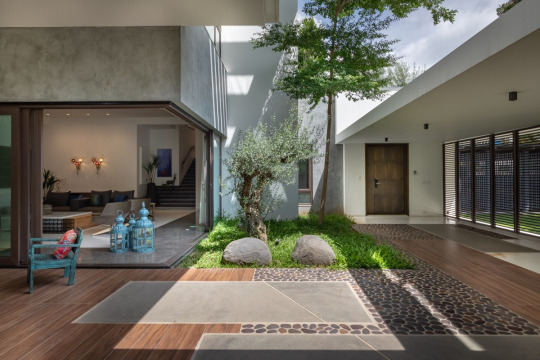
The central courtyard is often referred to as an atrium and is a unique feature that can give your home an abundance of natural light. A central courtyard in your home can provide peaceful privacy for the family, away from the hustle and bustle of everyday life. It is also a perfect way to make the most of the beautiful Indian climate! Courtyards add warmth and a point of difference to a client’s home. Designing courtyards is in line with philosophy of providing a solid connectivity with nature while responding to client needs and their vision of beautiful, livable spaces. Courtyards can be the heart of a building where natural light and warmth permeate throughout the space.
Central courtyards are not only aesthetically beautiful but offer many benefits to the home such as better ventilation. The open space allows for air movement within the home and natural breezes can be substituted for expensive air conditioning in the warm Indian summers.The security of a central courtyard is also an added bonus as clients can open all of the windows and doors during the day and night without worrying about intruders.

Whilst central courtyards are not new to the building industry, they are a classic feature being the Traditional homes from across the globe have used designs with interior courtyards for thousands of years, but have fallen out of favour in recent generations. From the earliest example of a courtyard house in 6000BCE, to the ancient Roman Domus, to the Chinese Siheyuan and the Sahn of the typical middle eastern home, the courtyard house has a long history that crosses regional boundaries and spans many climactic zones. Recent research has focused in on the many benefits of these traditional designs; these homes not only have sustainability advantages, like passive cooling, but also create major benefits for their inhabitants health and social life. Can we capitalize on these traditional models by incorporating courtyards into our modern architecture?
In warmer climates, courtyard homes are particularly sustainable, allowing for greater ventilation in the home and cooler spaces of outdoor refuge than the neighbouring streets.

“Courtyards work with any style of home, from modern to classical, but the designs are particularly popular in warmer climates, where courtyards induce airflow. When designed properly, one end of the courtyard can be 15 degrees cooler than the other end because of cross-ventilation.”
Courtyards might not just make our lives greener- they may also make them happier. In multi-family housing, a courtyard can be a “central component to promote social and cultural health and happiness of residents.” In a research, one notices data both qualitative and quantitative data on courtyard garden house designs, and concluded that it is the combination of “a sense of privacy with a feeling of community” that is the reason for the social success of these spaces.
But How can we adapt traditional courtyard spaces into our contemporary design work? In what ways can we utilize the inherit powers of the courtyard to improve our housing designs? because Courtyards are an Architectural Design Element.When I teach my students of Interior Design I ask them to plan a residential space as per the bio-climatic requirements of Nature so as to increase the well-being of the family residing in that house .
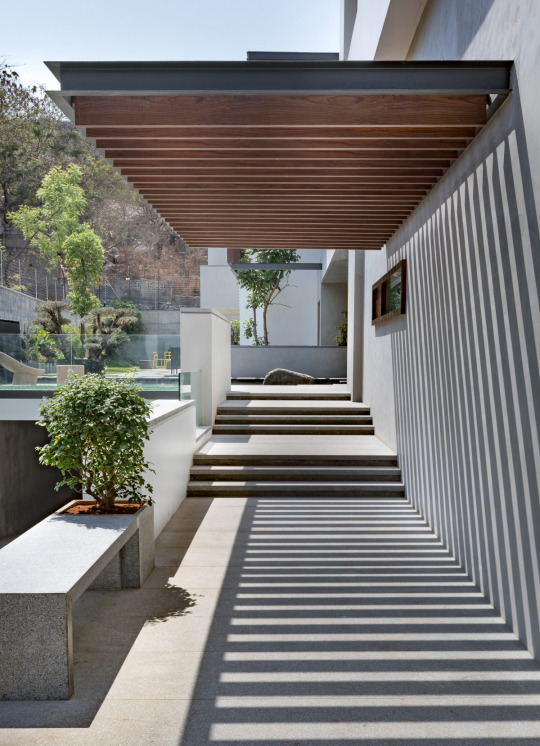
Architecturally, courtyards add a design element that creates connectivity between interior and exterior space. The open air oasis, a rarity in dense cities, provides a multi-functional extension of living space ideal for entertaining, gardening, yoga and star gazing, right in the middle of a restless city. Unlike a yard, courtyards carved out in the center of a building provides a private tranquil space for homeowners, or buffered space for apartment dwellers in courtyard apartments.
Connecting with Nature
Living in a hyperconnected environment has been scientifically proven to induce stress, feelings of loneliness and people yearn to have more connectivity to the world we live in. Natural environments and having access to outdoor space can have a positive impact on physical and mental health and the benefits of connecting with nature can improve well being.We have to be in contact with our natural surroundings to acquire an intimate knowledge about them and in order to protect them. We will need a paradigm shift so that a building becomes a member of the landscape, collecting solar energy from the sun for its electrical needs while sequestering carbon and producing oxygen, harvesting rainwater for potable uses and maintaining an edible forest, and supplying waste water to on-site wetlands. Our bid for courtyards is a small step forward toward our vision of this harmonious future, which looks to a city teeming with life, not the sterile projection of Wall-E and other climate disaster movies.

Every house can benefit from blending with nature, and in the current urban environment, there’s no better way to achieve this than with internal gardens for modern Indian homes. Besides adding a stunning feature to the interiors of the house, an interior courtyard garden provides a relaxing retreat where one can refresh one’s energy amid the soothing greenery. In modern Indian homes, it’s easy to incorporate an internal garden seamlessly with the help of glass walls, sliding doors and retractable ceilings.
For houses, if one wants specific designs such as interior courtyard designs — Kerala style, with a traditional courtyard around which all the rooms of the house wrap, it’s essential to incorporate it into the model at the time of planning the house. Of course, it’s possible to install simple indoor gardens even in small apartments.
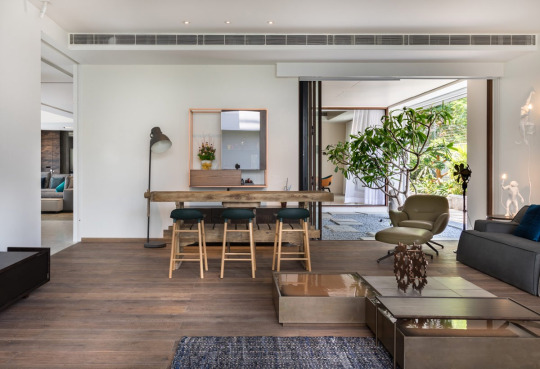
The most straightforward idea for an indoor garden design in India is to have a low-maintenance rock garden with hardy plants that don’t require much care. All you need is a small area, either off the living area or a bedroom, where rocks and plants can be artistically arranged to create a lovely green patch. Ideally, glass windows or a sliding door should allow you to view the garden from within the room to bring in the freshness of the garden into the home’s interiors.
Another idea is to have a Japanese indoor garden design with pebbles, a bamboo plant and a small fountain that not only don’t require much space but also are cost effective and easy to maintain. A Japanese garden is minimalist in nature, making it the perfect internal garden for a modern home.
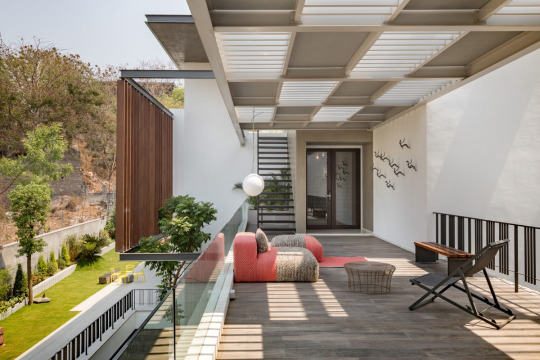
Green walls or vertical gardens are a new trend in Indian homes as they only require a bit of wall space to bring greenery into any room. These gardens are also relatively maintenance-free if they come with automated-watering systems.
While many old bungalows in India have a traditional courtyard in the centre, often with a water feature or a tree, modern apartments have an insufficient area within to incorporate a large courtyard. A smart solution is to create small interior courtyard designs, with artificial grass, potted plants and even a customised water feature in a corner. Adding artwork and sculptures on the wall as well as seating can convert the area into a cosy space where your family will love to relax in the evenings or early mornings.

The design can be implemented even in a balcony or terrace adjoining the living room by u When thinking of internal gardens for modern Indian homes, one of the most common designs that come to mind is the traditional central courtyard, like the ones seen in old houses in Kerala. While it might seem like the design won’t suit a modern style home, one can adapt it by using the square or rectangular well in the centre with a glass roof overhead to protect it against the natural elements. In a modern house, using French doors or picture windows that frame the views of the courtyard from within the home can make it appear that the greenery is an extension of the room, adding a calming touch to the ambience.
One can carry through certain traditional elements in the interior courtyard garden by planting a large tree or installing a pond with floating flowers in the centre of the courtyard. Some pieces of traditional furniture such as a simple wooden swing can look just as good even in a modern house. To keep the area maintenance-free paving blocks of concrete or spread along the walls to add to the greenery.

Using sliding glass doors to separate the areas without blocking the views of the garden.
For homeowners who value sustainability when building a home, one of the best ideas is to retain the existing trees on the plot of land and design the house around it. Imagine having a tall tree with its branches running through several rooms in the house! You can extend the idea by enclosing the tree within glass walls to create an internal garden with pebbles and potted plants. This type of interior courtyard garden design not only adds a unique feature to the house but also allows nature to thrive amid the construction as the glass doesn’t block the sunlight, thereby allowing the tree to grow well.

Since space is limited in most modern Indian homes, it’s an excellent idea to identify dead spaces that can be converted into a lovely internal garden. Usually, the entrance corridor or the stairwell are common areas where space gets wasted. By designing the area to incorporate an interior courtyard garden one can enjoy the benefit of having a splash of green inside the home.
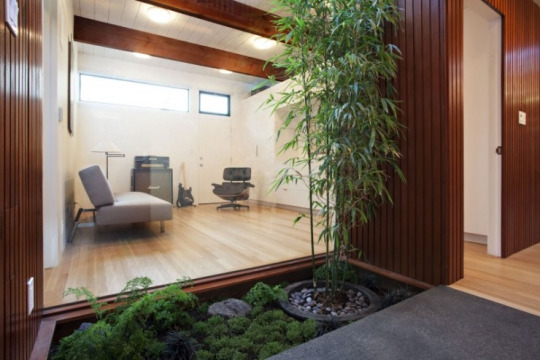
It doesn’t take much to build an internal garden under the atrium at the entrance or beneath the staircase. All you need is a few planters, pebble borders and niches or shelves on which more potted plants can be placed. Of course, you can take it a step further by creating layers such as a water feature with floating lotuses or koi fish and covering it with glass tiles to make a stunning entrance for the home.
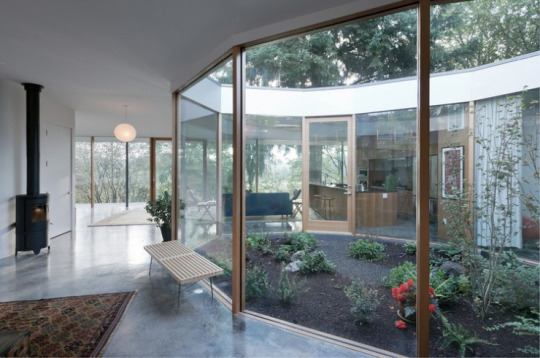
While it isn’t impossible to create internal gardens for modern Indian homes, it’s essential to design the space so that you get the most out of it. It’s advisable to consult a landscape architect or professional who has the knowledge and experience to suggest the best elements that can be a part of the interior garden in your home.
Advantages of a Courtyard

Architecturally, courtyards make perfect sense. They give the residents of a home a private outdoor space, which is secure and usable throughout the day. With its natural ventilation, a courtyard helps the house stay appropriately warm or cool without the need for heaters and air conditioners.
In a warm climate, a courtyard can bring down the house’s temperature, saving on energy bills. Several courtyards also include natural cooling elements as a part of their design like a fountain, a basin, an artificial waterfall, thick external walls and double-glazed windows.

Interior courtyards are very much in vogue today for the above reasons. They provide an aesthetic means of spending time with nature in the midst of a busy schedule. And the best part is that courtyards work with any style of home — modern or traditional.
So from growing an indoor garden to creating a serene corner in a crash and burn busy lifestyle, interior courtyards can do so much to enrich your life. Here are some more advantages you can enjoy…
For overall mental and physical health, human beings need to see the night sky every so often. In a densely designed city, it’s truly a luxury to steal a quiet moment of private reflection in your own courtyard. There are many benefits of a courtyard that go beyond aesthetics. Some of the benefits include:
Light

An interior courtyard centrally sits under the open sky, flooding the space around it with daylight. Every room that opens into the courtyard gets its dose of sunlight during the day, helping you with energy savings.
The benefits of being exposed to this optimum quantity of sunlight are well known, and even during a daily workday, you’ll benefit by simply having your morning tea in a natural refreshing environment. For courtyards that are located in the front or back of the house, the adjacent room can be the kitchen or living room, which is most often used during the day.
Centrally located courtyards in urban setups may be surrounded by high walls restricting the entry of light. In such cases, you can use exterior reflectors on your windows and doors.
Ventilation

For centuries, interior courtyards have been created to aid the purpose of natural ventilation. Ventilation itself serves many purposes. It provides fresh air, improves oxygen supply and dilutes odours. When creating a courtyard, keep room for cross ventilation, which offers the maximum cooling effect.
Courtyard ventilation also has passive cooling effects during the night, which brings the overall temperature of the place down. In addition to this, a courtyard filled with plants and a garden area helps keep the house cool even in scorching and arid climates.
Separate Spaces

A courtyard acts as a space separator within the home. A courtyard between the living room and bedrooms, can work to increase the privacy between these areas, not letting casual visitors walk in unwittingly. It provides a break in the décor too, with each section gaining a new personality that goes only with the central flow.
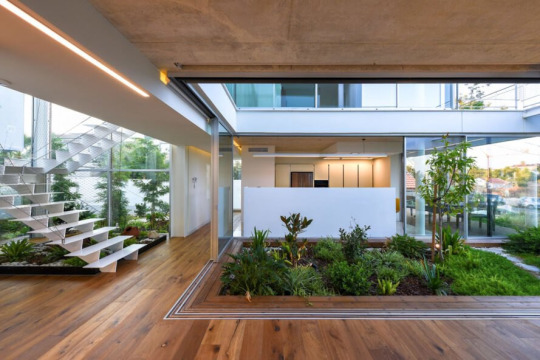
A courtyard between the kitchen and living room is a perfect place for entertaining guests as well as unwinding after the day’s work.

Connects Spaces
A courtyard can also be a connector of spaces within the home, providing accessibility to different parts with ease. If you have a courtyard in the front or at the back of your house, it not only acts as an entrance or exit point, but can connect to more than one room depending on your courtyard architecture.
A centrally located courtyard, on the other hand, can provide access to multiple rooms in the house, making movement easier.
Privacy + Security: Instead of hauling in the grill every night, a courtyard allows you to truly go wild with your ultimate vision for a secret garden and teak Adirondack chairs or fully decked out outdoor kitchen. Likewise, plants and edible gardens will be out of reach from hungry critters or neighbors tempted to snack on your tomatoes.
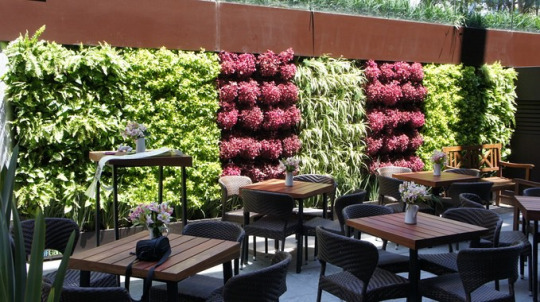

Therapeutic Properties: As a society we suffer from nature deficit disorder. Studies have shown that spending mindful time outdoors can reduce stress levels and strengthen your immune system. Putting down the electronics and spending intentional time in the privacy of a courtyard and allowing yourself to get lost in your surroundings can help you reach a greater sense of calm.
Possibilities: Unlike a yard, open to lookie-loo neighbors, an enclosed courtyard becomes another room in your house offering a private respite space. Being open to the sky, there are no height limits, and it can be layered with trellises, plant life, hanging cocoon chairs, party lights, or whatever you please. Or, you can go big and create your own outdoor spa!
Recreation: Letting kids or pets play outdoors is a little less intimidating and can provide a greater sense of security with a courtyard. They get fresh air and you get piece of mind. Likewise, adults wanting to unwind in a private setting without missing out on a lovely summer night can get ahold of both! Depending on lot size, it’s entirely possible to install a p��tanque court. How glorious would it be to spend warm summer evenings with friends, and playing a spirited game of pétanque more like playing with marbles in India ?
Courtyard Kitchen Extension

In India , we relish the short window of warm temperatures, and when the sun is shining you probably don’t want to be trapped inside, busy with meal preparation. Extending the kitchen to the outdoors can provide a fresh perspective that can boost culinary imagination and create a nature-inspired gathering space for family and guests.
There are a variety of outdoor cooking options to consider when you’re planning an outdoor kitchen design. Whether you’re an aspiring master chef or a true grill master, installing a grill, smoker, and wood burning oven trifecta can navigate your gastronomy quest throughout the year.
Landscaping
Imagine being able to walk out your back door and wander into a green cloaked paradise teaming with birds and butterflies. With little effort or expense, it’s possible to create a lush landscape reminiscent of local garden nurseries. A mix of edible, native and perennial plants can bring interest and layers of visually stunning plant life to your doorstep. Native plants are usually low-maintenance and drought tolerant and tend to attract beneficial insects, such as pollinators, and colorful butterflies. Depending on the health of the soil and sun orientation, edible plants can be planted directly into the ground and provide a healthy dose of vegetables throughout the summer. Having fresh herbs and summer vegetables available just a garden shear snip away can be so rewarding! If the soil situation is suboptimal, using a variety of containers, planter boxes or raised beds are great options and have the added benefit of being mobile so they can be placed along the sun’s path. A more extravagant landscape plan would include shrubs, trees and an irrigation system to lessen the amount of labour and time spent with maintenance. Although, there are times when I find solace in the simple task of watering plants. With a courtyard, you have the option to enjoy the refreshing joy of being amidst greenery without having to look for it in far flung jungle reserves and nature resorts. Simply head to your courtyard to rejuvenate your eyes with the sight of green — it’s beneficial for health.
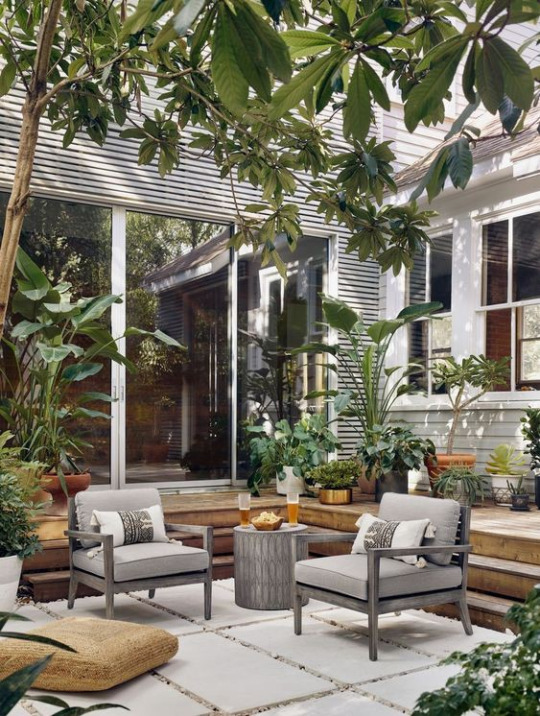
The great part of having a courtyard is that you can enjoy what different seasons bring in. From blossoming flowers under the summer sun to the hundred hues of green during the rains, to the select blossoms of winter, you can enjoy it all without stepping out from your home.
Designing and Building a Courtyard
When thinking about utilizing a courtyard in your design you should take the following into consideration: budget, convenience and placement of a grill, shelter (is an overhang possible to protect and shade windows and doors?), rainwater collection and drainage, irrigation, hardscape, landscape, built-ins, running utility lines, and lighting hook ups.
In all a Courtyard is an exceptional microclimate Controller and can be a great Stress Reliever for the families .
#courtyard#interiordesign#dezyneecolecollege#education#students#therapeutic#residential#areas#connects spaces#important#space
3 notes
·
View notes
Note
can you do another dorm inspiration post? im going to be an arts student and im not into all the standard dorm decor i keep seeing on pinterest.
Yes!! I’ve been meaning to do my Usonia-inspired dorm post so this might be more your style???? First of all, listen to this 99%PI episode on Usonian homes. I’ve posted some on here before too!
Usonian homes are “typically small, single-story dwellings without a garage or much storage. They are often L-shaped to fit around a garden terrace on unusual and inexpensive sites. They are characterized by native materials; flat roofs and large cantilevered overhangs for passive solar heating and natural cooling; natural lighting with clerestory windows; and radiant-floor heating. A strong visual connection between the interior and exterior spaces is an important characteristic of all Usonian homes.” I think this is perfect for a dorm space - small without much storage, and many of the Usonian homes followed FLW or MCM decor already, with exposed medium wood and brick/white brick or cinderblock. A lot of the dorms I’ve been in have been built in the 60s with white brick cinderblock and wood, so this seems like such a good fit!
I’m going to be working on the assumption that the average dorm room is 130 sq ft or smaller, you’re sharing the room, and it comes with a twin bed and perhaps a desk.

First, I would say embrace and work with the wood by getting other furniture/decor pieces in similar wood shades. This chair is cool and relatively compact (good for company and might work for a desk chair), these little planters would look cute on your desk or window sill.
Ok I went a little chair crazy while writing this. This is a cute no-nonsense MCM inspired chair, but it comes in a set, so you’d have to convince your dormmate to embrace the Usonia lifestyle. This is a cute cozy chair, if you have room for it. This is a better and more expensive version of the previous one and I like it a lot better but it’s a little much for dorm furniture. This one is funky, MCM, natural color but still colorful, and can work as a desk chair as well.

I found a couple tutorials on hanging things on brick walls! You can also maximize vertical space and mimic having things on the walls by hanging things from the ceiling! These planters are adorable and would fit in with the Usonian idea of natural materials and bringing nature into your home. You could also hang pictures or a curtain or anything, really, by using one of these ceiling mount hanging rails. For hanging directly on brick, Command hooks are going to be your best friend. They even make cute ones now?!?!?! News to me.

My next tip kind of goes two different ways, depending on your personality:
a) Embrace minimalism and embark on a minimalism challenge. You are probably keeping most of your belongings with your parents so you have a good opportunity to experiment living with less and organizing your space/life in a different way, especially during a busy new experience like college. Everyone talks about this book all the time but it really kickstarted my decluttering habit/addiction! It’s well worth it imo. This is especially relevant because minimal storage is a Usonian principle.
b) Use statement furniture and color to bring personality into the space. Get a unique lamp like this (swap out the shade tho), or a little table like this. Bring color/texture/etc in wherever you can in a small space, like getting these fun colorful hangers or a bright curtain for your window.

Finally, my big tip is always R U G S. Rugs make a space so cozy. For a Usonian-inspired dorm I like something like this because it somehow reads modern + cozy while still being minimal/MCM/Usonian.
I hope this was helpful!!!! I might be way off base lol
#affiliate links#design#usonia#frank lloyd wright#dorm decor#dorm tips#home decor#househunting#not a house
361 notes
·
View notes
Text
Remodelling existing buildings: decarbonisation
Remodelling existing buildings, decarbonisation strategy, LWK + PARTNERS Zero energy building design in Hong Kong
Remodelling existing buildings for net zero
16 December 2021
Act now for net zero: remodelling existing buildings
Decarbonisation throughout the building life-cycle has become an essence of contemporary architectural design. In Hong Kong, a subtropical high-density city, commercial buildings currently take up the highest percentage of electricity use and this is exacerbated by its ageing building stock which is significantly holding back the city’s transition to carbon neutrality by 2050.
Advancing Net Zero – Oxford House Revitalisation design by architects LWK + PARTNERS: images courtesy of LWK + PARTNERS
LWK + PARTNERS – Act now for net zero
LWK + PARTNERS recently won Merit in the Advancing Net Zero Ideas Competition organised by Hong Kong Green Building Council in Hong Kong with a retrofitting proposal for Oxford House, an existing office building in the city. The design envisions to turn the building into an urban forest paradise, in a high-rise, high-density city context, that promotes mental health and significantly cuts down on energy consumption through active and passive design strategies, bringing the vision of net zero closer to reality.
Innovations to upgrade existing buildings into green, energy-efficient structures have the potential to revolutionise sustainable urban development as it keeps down both embodied carbon (by reusing building materials and avoiding new ones) and operational carbon (by changing how the building operates in the future). As an illustrative example, the Oxford House competition proposal sheds new light on future urban regeneration and helps us rethink the form of future-ready high-rise developments in the age of climate change. Below are the range of passive and active strategies it adopts to achieve low-carbon objectives while maximising users’ thermal comfort and wellbeing.
Minimising heat gain
The first step for lowering energy use in buildings is to reduce heat gain. The Oxford House proposal adapts to Hong Kong’s densely populated humid subtropical urban environment by making the best use of vertical spaces to reduce heat gain from solar radiation and lower the energy demand for cooling.
The proposal reuses and converts the existing façade into a green façade with a setback design that also creates a double-skin façade. It sets back the existing façade while leaving the floor slab extent unchanged, resulting in projecting floors that double as a shading device for the floors below. This reduces the need for new material for building shading.
The setback also creates a double-skin façade, which consists of an external glazing, an intermediate cavity and an inner façade. The external glazing provides protection against weather, while the intermediate cavity, spanning 10 centimetres to 2 metres, would act as a thermal cushion with planters for additional shading and solar absorption. The inner skin protects against indoor thermal losses and facilitates the control of permeability for natural ventilation. The existing low-e external glazing is reused as the inner skin.
To produce a stack effect, which enhances natural ventilation, voids are opened in existing floor slabs to allow for hot air to move up creating negative pressure to draw the air inside.
Pushing back the line for energy consumption area
Air-conditioning is a major source of energy consumption. Pushing back the line for air-conditioned area is a major sustainable design strategy which involves a combination of natural ventilation and auxiliaries – known as hybrid ventilation.
In this Oxford House example, the ground-floor entrance space is fully opened up to omit air-conditioning altogether. Natural lighting is also introduced to avoid artificial lighting, while a pair of existing escalators is replaced by stair seating to provide both connection between the floors and gathering spaces.
A Green Link is proposed to turn the existing connection into a semi open space for a mentally comfortable atmosphere and to cut down on energy consumption. Cross ventilation is encouraged in common areas like entrances, lobbies and shared corridors, through operable openings and open façades from opposite sides of the building.
These are further assisted by active gears to maximise thermal comfort. A solar chimney is introduced to improve the air ventilation in the car park or foyer. It typically consists of a black-painted chimney which quickly heats up the air inside, creates an updraft of air and draws it to the outside, increasing the air circulation inside the building and cooling the building.
Other energy-saving devices include a combination of big ceiling fans and reflective pools, which improves the thermal sensation of users through water evaporation and ventilation. Post-occupation evaluation can also help determine the optimal level of water-cooled breeze in a semi-controlled environment. Anidolic light pipes are installed to capture daylight and transfer it to indoor spaces, reducing the need for artificial lighting and meaningfully integrate our natural and built environments.
Integration of renewable energy systems
In the future, low-carbon or even zero energy buildings will not only be defined by the amount of energy they save, but also how much clean energy they generate to offset their own consumption.
One way is through installing photovoltaics (PV) to generate solar power. The project proposed installing bifacial panels on the rooftop to generate power from both sides of the panels. Due to Hong Kong’s location in the northern hemisphere, panels would face south with a tilt angle to maximise sunlight reception. Panels should ideally be installed on white reflective surfaces for utilising the rears. They also provide shading for the building, lowering the temperature by about 5°C.
Building‐integrated Photovoltaics (BIPV), which means using PV panels as construction materials for the building envelope including the façades, will be used to capture the most sunlight. It is an immediate cut-down on the materials cost and requires minimal care and maintenance compared to conventional materials like tiles and glass, therefore lowering the long-term life-cycle cost.
Solar tiles double as roof tiles and PV panels, with finishes that can mimic the appearance of stone or ceramic tiles. Further installing an insulation layer underneath will reduce approximately 5°C – 8°C in temperature and therefore air-conditioning consumption. For this project, a factory in Guangdong province and a light-weight material are considered to reduce the carbon footprint associated with transportation.
Maximising active carbon conversion
Designing buildings with extensive greenery and landscaping can maximise active carbon conversion. The Oxford House proposal has the existing refuge floor redesigned as a communal sky garden with spectacular views of the Victoria Harbour. The open-sided areas allow cross ventilation to mitigate the heat island effect and enhance the visual permeability of the building. This creates a green urban public space in the fast-paced working environment which blurs the indoor-outdoor boundary and breaks the impression of a traditional business complex with a breathing eco-architecture. A series of green roofs, edge planting and vertical greening will also work as a natural air-filtration system for the health and wellbeing of occupants.
To raise people’s awareness and participation of low-carbon living and waste recycling, the design provides spaces for urban farming, while low-carbon restaurants are conveniently located on all three refuge floors and the roof floor to attract traffic and popularise the concepts of shorter supply chains, less packaging, lower energy consumption and reduction in food waste.
An innovative energy floor system is adopted to allow users to take part in electricity generation through their footsteps as they walk on these special tiles. The energy could be used directly to charge battery packs for smartphones that visitors can use for free in the low-carbon restaurant or light up the energy-efficient LED lighting in the sky garden.
Energy and waste management
Much energy and materials in the daily operation are wasted due to lack of management. The proposal has designed an energy management programme to cut down energy consumption and the amount of waste through recycling, thus reducing carbon emission. It includes the following devices or measures:
High-efficiency LED lighting
Solar-adaptive window blinds with automatic shading system
Regenerative lifts
AI-based energy optimisation solution (AI-EOS) for HVAC system
High-volume low-speed fans / displacement ventilation with temperature setback
Chilled beam system plus raised floor displacement ventilation
To minimise carbon dioxide (CO2) and wastewater emissions, the design features an internal water cycle as a visible design element while improving the climate within the building at the same time. First thing to consider is to reduce water consumption by using low-flush toilettes and dry urinals. Alternatives for fresh water sources are rainwater harvesting and reuse of separated and treated wastewater streams like greywater (wastewater of non‐toilet origin).
Change of mindset and behaviour
Changes in workplace culture and individual behaviours to create the most with the least resources can indeed have a huge impact on carbon reduction. The design encourages the use of open plans, co-working spaces and sharing of workstations as employees may not all be using the office at the same time. This saves 1/3 of working space and prevents duplicated systems and resources.
The proposal also encourages people to walk or cycle to work by providing shower and bicycle parking facilities, which reduces about 10% of CO2 emissions on average. It also promotes the use of staircase instead of lifts by designing more user-friendly, highly visible staircases with wider steps and natural ventilation.
The threat of climate change is imminent, and we need to act fast. Our high-density urban habitats are now packed full of inefficient built structures which are in want of redesign and upgrades. To advance net zero, future architecture must take more heed to remodelling or modifying existing buildings as much as building greener new ones to cut back energy consumption.
Remodelling existing buildings, decarbonisation strategy by LWK + PARTNERS images / information received 161221
LWK + PARTNERS Architects, Hong Kong images courtesy of architects office
LWK + PARTNERS Zero energy buildings design image courtesy of LWK + PARTNERS LWK + PARTNERS Zero energy buildings design
LWK + PARTNERS Saudi Arabia Office The new LWK + PARTNERS Riyadh studio will be led by Kerem Cengiz, Managing Director – MENA (right), and Usama Aziz, a new Director.
Website: www.lwkp.com
Location: HK, China
LWK + PARTNERS Designs
Sai Kung Outdoor Recreation Centre Temporary Quarantine Facilities photo : Paul Y. – iMax Sai Kung Outdoor Recreation Centre Facilities
OCT Caoqiao Cultural Commercial Street, Hunan Province, China image courtesy of architects Hunan OCT Caoqiao Cultural Commercial Street
Shijiazhuang Zhao Hua Hospital in China
Zhongshan OCT Harbour Development
Hebei Grand Hotel, Anyue in Shijiazhuang, China
Hong Kong Architecture
Hong Kong Architecture Designs – chronological list
Hong Kong Building News image © Design Society
Hong Kong Architects Offices – Architecture Firm Listings
Comments / photos for the Remodelling existing buildings, decarbonisation strategy by LWK + PARTNERS page welcome
The post Remodelling existing buildings: decarbonisation appeared first on e-architect.
0 notes
Text
Raise a Toast to Earth Day in One of These 7 Eco-Friendly Homes
realtor.com; iStock
With Earth Day on the horizon, it’s high time to delve into the green world of eco-friendly housing. We sifted through the listings currently on the market and dug up a few gems.
Whether you’re into passive home construction, earth-sheltered homes, or permaculture farms outfitted with yurts, we’ve found ideal retreats for the eco-aware.
If you’re ready to go green and reduce your carbon footprint, there’s no better place to look than these seven stunning opportunities. Scroll down and dig in…
12860 Admiral Ave, Los Angeles, CA
Price: $2.5 million Green elements: Emblematic of SoCal style, this newly built home on the west side of the city offers plenty of eco cred. The light-filled house features “cross ventilation, gray water collection planters, and passive solar building design.”
Los Angeles, CA
realtor.com
———
3846 Lively Cir, Dallas, TX
Price: $1.15 million Green elements: This three-bedroom beauty makes a bold claim! According to the listing, this brand-new construction is the first internationally certified passive house in the Lone Star State. High-end finishes throughout mean a buyer won’t have to sacrifice luxury to go green.
Dallas, TX
realtor.com
———
1659 Tower Rd, Barnet, VT
Price: $665,000 Green elements: The gorgeous home on this 75-acre spread is energy-efficient. And the land offers a buyer ready access to the surrounding environment: fields, forests, and trails with abundant swimming, kayaking, and hiking opportunities.
Barnet, VT
realtor.com
———
241 W Valley View Dr, Canton, IL
Price: $149,900 Green elements: Built into a berm under a layer of earth, this home is billed as “tornado proof, fire proof, and termite proof.” Front-facing windows ensure a buyer won’t be plunged into permanent darkness, and the result is a light and bright house nestled under 5 feet of soil.
Canton, IL
realtor.com
———
2305 Thurman Ave, Cleveland, OH
Price: $499,900 Green elements: Close to downtown Cleveland, this three-bedroom was “built to be the healthiest, most durable/low maintenance, eco-friendly home in Northeast Ohio.” The wood walls and floors add a feeling of warmth—a crucial feature to fend off those cold Cleveland winters.
Cleveland, OH
realtor.com
———
Golden Cup Ranch, Ukiah, CA
Price: $1.6 million Green elements: Fancy yourself a farmer? Here’s your chance to own an eco-friendly home surrounded by organic gardens. Marketed as an “80-acre eco-friendly permaculture retreat,” it’s an ideal spot for a buyer looking to retreat from civilization for a bit. In addition to the main house, there’s a yurt and a treehouse.
Ukiah, CA
realtor.com
———
127 Rye Cove Creek Rd, Stuart, VA
Price: $2.2 million Green elements: The price was reduced by $200,000 in January. This home has been certified LEED Platinum and comes with more than 100 acres. While eco-minded buyers will likely go bonkers for the home’s distinctive design, we’re salivating over the wood-fired pizza oven out back.
Stuart, VA
realtor.com
The post Raise a Toast to Earth Day in One of These 7 Eco-Friendly Homes appeared first on Real Estate News & Insights | realtor.com®.
from https://www.realtor.com/news/trends/eco-friendly-homes-for-sale/
0 notes
Text
Raise a Toast to Earth Day in One of These 7 Eco-Friendly Homes
realtor.com; iStock
With Earth Day on the horizon, it’s high time to delve into the green world of eco-friendly housing. We sifted through the listings currently on the market and dug up a few gems.
Whether you’re into passive home construction, earth-sheltered homes, or permaculture farms outfitted with yurts, we’ve found ideal retreats for the eco-aware.
If you’re ready to go green and reduce your carbon footprint, there’s no better place to look than these seven stunning opportunities. Scroll down and dig in…
12860 Admiral Ave, Los Angeles, CA
Price: $2.5 million Green elements: Emblematic of SoCal style, this newly built home on the west side of the city offers plenty of eco cred. The light-filled house features “cross ventilation, gray water collection planters, and passive solar building design.”
Los Angeles, CA
realtor.com
———
3846 Lively Cir, Dallas, TX
Price: $1.15 million Green elements: This three-bedroom beauty makes a bold claim! According to the listing, this brand-new construction is the first internationally certified passive house in the Lone Star State. High-end finishes throughout mean a buyer won’t have to sacrifice luxury to go green.
Dallas, TX
realtor.com
———
1659 Tower Rd, Barnet, VT
Price: $665,000 Green elements: The gorgeous home on this 75-acre spread is energy-efficient. And the land offers a buyer ready access to the surrounding environment: fields, forests, and trails with abundant swimming, kayaking, and hiking opportunities.
Barnet, VT
realtor.com
———
241 W Valley View Dr, Canton, IL
Price: $149,900 Green elements: Built into a berm under a layer of earth, this home is billed as “tornado proof, fire proof, and termite proof.” Front-facing windows ensure a buyer won’t be plunged into permanent darkness, and the result is a light and bright house nestled under 5 feet of soil.
Canton, IL
realtor.com
———
2305 Thurman Ave, Cleveland, OH
Price: $499,900 Green elements: Close to downtown Cleveland, this three-bedroom was “built to be the healthiest, most durable/low maintenance, eco-friendly home in Northeast Ohio.” The wood walls and floors add a feeling of warmth—a crucial feature to fend off those cold Cleveland winters.
Cleveland, OH
realtor.com
———
Golden Cup Ranch, Ukiah, CA
Price: $1.6 million Green elements: Fancy yourself a farmer? Here’s your chance to own an eco-friendly home surrounded by organic gardens. Marketed as an “80-acre eco-friendly permaculture retreat,” it’s an ideal spot for a buyer looking to retreat from civilization for a bit. In addition to the main house, there’s a yurt and a treehouse.
Ukiah, CA
realtor.com
———
127 Rye Cove Creek Rd, Stuart, VA
Price: $2.2 million Green elements: The price was reduced by $200,000 in January. This home has been certified LEED Platinum and comes with more than 100 acres. While eco-minded buyers will likely go bonkers for the home’s distinctive design, we’re salivating over the wood-fired pizza oven out back.
Stuart, VA
realtor.com
The post Raise a Toast to Earth Day in One of These 7 Eco-Friendly Homes appeared first on Real Estate News & Insights | realtor.com®.
from DIYS https://ift.tt/2visBtn
0 notes